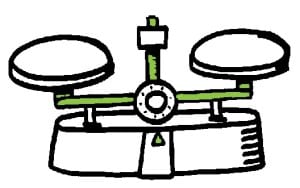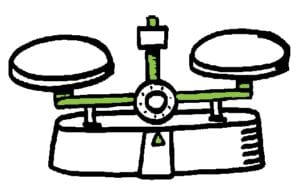SR&ED vs IRAP: An R&D Funding Comparison & Analysis

 Innovation has been identified by the Canadian government as an area of investment to fuel economic growth and prosperity. Thus, several research and development grants, loans, and tax credit are offered through the government to help promote innovation from Canadian-based corporations.
Innovation has been identified by the Canadian government as an area of investment to fuel economic growth and prosperity. Thus, several research and development grants, loans, and tax credit are offered through the government to help promote innovation from Canadian-based corporations.
It is important that Canadian SMEs understand the best application of various R&D funding initiatives in order to maximize their funding potential and consequentially improve their research and development scope, scale, and timelines.
Two popular funding programs related to R&D are the Scientific Research & Experimental Development (SR&ED) tax credit and the grants provided under the Industrial Research Assistance Program (IRAP). Both programs should be considered by any Canadian incorporated business that carries out internal R&D activities. As such, it is important for Canadian SMEs to know when and how to use each one of these programs based on their unique advantages.
R&D Grants vs Tax Credits: Project Timelines & Application Process
One of the key differences between SR&ED and IRAP funding is the timeline for eligible projects. SR&ED allows companies to consider previous allocated spends of R&D activities, while IRAP is very pre-planning focused. Companies who have already carried out R&D activities and expenses would then apply for SR&ED with the plan of obtaining a percentage of their already incurred expenses back as a tax credit or incentive. Additionally, CRA recently created new rules on SR&ED called the “5 Questions”. If the applicant cannot effectively answer those questions, their funding is at risk with SR&ED. The retroactive activities provide a bit more flexibility with SR&ED however the uncertainty of funding is a limitation of the program.
IRAP is different; by applying for and receiving confirmation of funding before carrying out the outlined R&D activities, IRAP was created to help companies execute R&D activities with technical risks and uncertainty that they would not otherwise have the cash flows to accommodate. Companies have their projects approved and are given a defined funding value upfront before they carry out their activities, ensuring that they have proper cash flow management from the secured funding amount. This allows companies who want to participate in IRAP to work with key prospect(s) or client(s) for new product development while mitigating the financial risk involved in the project. This has led to product diversification across a number of industries.
SR&ED and IRAP Reimbursement Timelines
Because of the retroactive nature of SR&ED, funding can take up to 4-12 months to be reimbursed after the R&D activities are conducted. IRAP functions quite differently; a successful IRAP application is reimbursed monthly as the expenses are dispersed based on the outlined budget. This further lessens the impact of R&D activities on the company’s cash flows – a very critical advantage of IRAP programs. It is recommended to utilize IRAP for large projects consisting of extensive payroll and subcontract costs that might affect a company’s operating income and when banking partners usually will not support due to technical risks.
SR&ED vs IRAP Funding: Eligible Costs & Contributions
Both of these popular research and development funding programs also differ in eligible expenses and percentage coverage. SR&ED will typically cover 35-45% of an overall project’s costs; a full breakdown is available in our Federal Budget Changes to SR&ED Program Blog. IRAP will typically cover 50-80% of eligible expenses, which is unreachable through the SR&ED program, giving IRAP an edge on the amount of funding support as a ratio of overall salary and subcontractor expenses.
In terms of eligible costs, IRAP will focus specifically on salary costs and Canadian subcontractor fees related to an R&D project. SR&ED will cover these, as well as overhead costs. Because IRAP covers salary and subcontractor costs at a higher rate, the critical question is “Would you consider taking action on an additional R&D initiative if you knew that IRAP contributions existed?”. It is a smart option compared to SR&ED for those expenses when it is an option. Please note that while SR&ED has one set of rules, IRAP is more flexible by offering a range of programs based on the project focus, each with their own timelines, expense coverage rates, and maximum funding amounts.
Stacking with SR&ED and IRAP Funding Projects
A common question we receive when we educate our clients about R&D funding is “Can I stack SR&ED funding with IRAP R&D contribution programs?” Before this question is answered, it is important to note that most funding programs do not allow more than 75% of a project to be funded by government funding programs. Having said that, we often recommend that clients utilize the higher cost coverage and shorter reimbursement period of IRAP funding for their subcontractor and salary costs, while utilizing SR&ED for overhead costs related to a project. This allows companies to benefit from improved cash flows, creating opportunities to invest in other areas, such as marketing and export development. R&D funding can help multiple strategic aspects of the business in this way. IRAP is not stackable with SR&ED or any FedDev Ontario program. If IRAP funding is used for a particular project, it must be outlined as a funding source in other application submissions.
Many SMEs pull one project out of SR&ED or do an incremental project via IRAP funding to enhance government contributions. Companies should look at both programs as valuable resources to fuel their R&D activities and technical product development projects. As a nation, it is pivotal that we strive for innovation by investing in R&D initiatives and breaking into new product categories and industries and market leaders.
Now that you’ve learned about the basics of IRAP and SR&ED, continue your journey and explore exactly how they stack up together. Download the IRAP vs. SR&ED slide deck to gain access!


Douglas Kind Appairy.com
6046162273
we have a company name Appairy.com or .ai
it does medical research on a wearable vest and an electronic stethoscope that transmits data remotely
I would be interested in talking to you
Thanks for your comment, Douglas. We’ll reach out to you directly.